Amazon Product Categories List Explained (What to sell, fees to know, and niches that win)
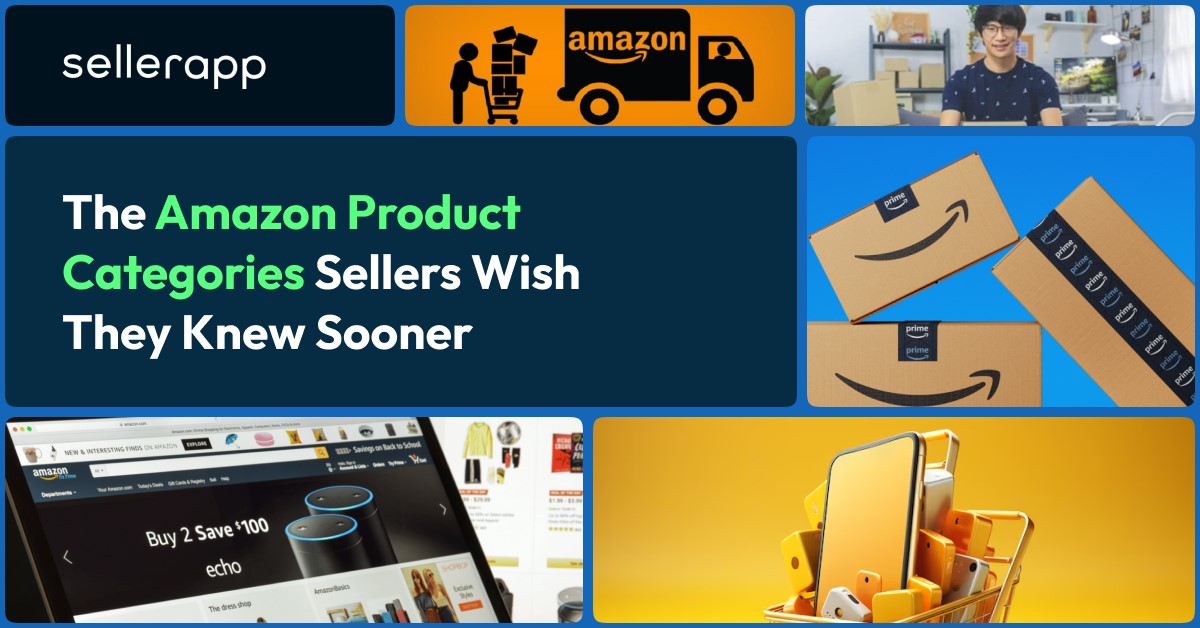
Choosing the right Amazon Product categories is incredibly important. It affects everything from SEO visibility to your Amazon product category fees, and even whether your item is eligible for certain Amazon affiliate product categories or business buyer programs.
It also plays a huge role in how you appear in filters, search rankings, and ads. Now, do you want to know how to find category of Amazon product? Or what top-selling product categories on Amazon you should keep an eye on? Or maybe you’re just curious about the Amazon product categories and subcategories list and how Amazon quietly shifts products toward specific browse nodes behind the scenes?
We’ll get into all of that and more. Whether you’re a first-time seller trying to figure out where your product fits in, or a seasoned pro wondering why your new SKU is underperforming, this deep dive into Amazon seller product categories will give you a reality check.
Because on Amazon, you need to know “where to sell” slightly more than “what to sell”.
Understanding the Amazon Product Categories List in 2025
Amazon is not just a single storefront, but a vast shopping mall with dozens of floors and departments. Every product is listed carefully, slotted into a specific aisle and section. If you misplace it? Shoppers might never walk past it, no matter how great it is.
That’s where the Amazon product categories list comes in. It’s more than just a filing system it shapes everything from who sees your listing to what filters you show up in. The category you choose can affect your product visibility, conversion rate, eligibility for programs like Amazon affiliate product categories or Amazon business product categories, and even how much Amazon charges you in product category fees.
Understanding how Amazon product categories and subcategories work isn’t optional anymore it’s a strategic lever. The right category can put your product front and center. The wrong one? It buries you beneath competitors, sometimes without you even realizing it.
Let’s find out how it works, because trust us, understanding how to find the category of an Amazon product the right way can save you time.
Categories > Subcategories > Browse Nodes
Think of Amazon Categories as a funnel:
- At the top, you’ve got broad main categories like Home & Kitchen, Beauty & Personal Care, or Electronics.
- Under those live subcategories, such as Storage Bins or Skincare Tools.
- Then comes the browse nodes, Amazon’s backend ID tags that function like invisible GPS coordinates, telling Amazon exactly where to shelve your product on its digital shelves.
Are you wondering why Browse Nodes matter? Because it is your product’s browse node that determines search relevancy, filter placement, and even what the algorithm shows shoppers under related products.
Then come the browse nodes Amazon’s behind-the-scenes GPS tags that quietly decide where your product shows up. You’ll spot them in the Product Details of existing listings or when using the Product Classifier tool in Seller Central.
If you choose the wrong node, Amazon does not just hide your products; in some way, you’re being erased.
Visible Categories vs. Backend Reality
This category is crucial to most sellers.
This is one of those sneaky areas that trips up even experienced sellers. What you see on a product listing page isn’t always the full picture. For instance, your listing might visibly show up under Kitchen & Dining, but in the backend, Amazon’s browse node could have quietly filed it under Event Supplies > Disposable Tableware. That small difference can have a big impact, affecting everything from your organic search traffic to the filters your product appears under.
Now the thing here is Amazon’s catalog isn’t just powered by what you select during listing setup. It depends on the algorithms that rely heavily on node IDs behind the scenes. So if your product suddenly tanks in visibility after a category update or listing change, this hidden backend switch could be the culprit.
You can fix it only if you know where to look. You can request a category/browse node change through Amazon Seller Central, and in many cases, correcting it will change how your product appears on the frontend. It not only help get your product in front of the right shoppers, but it can also ensure you’re showing up in relevant filters and search results right where your buyers are looking.
The Product Classifier
Here is the secret:
Seller Central gives you a defence tool called the Product Classifier, and hands down one of the most underused lifesavers for Amazon sellers. It helps you filter down from the top of the Amazon product categories and subcategories list to the exact browse node your product belongs in.
You can access it while creating a new listing, or independently to check where Amazon thinks your product should go. Just start typing in your product type or features, and it suggests the ideal path, like guiding you through the catalog network.
What category sells most on Amazon?
One of the most common questions sellers ask us, especially those just entering the market, is: What’s the most profitable or best-selling Amazon product category right now? And honestly, we get it. It is important to select the right category as it can make or break your visibility, conversions, and profit margins.
After working with thousands of sellers and examining trends in the Amazon marketplace we came across these findings that is based on a combination of internal testing, data from actual sellers we’ve worked with, and publicly available reports.
Let’s break it down:
1. Home & Kitchen
More than being a cliched category, Home & Kitchen is a sales machine. Think air purifiers, storage bins, cookware sets, and throw blankets. These are not something shoppers buy out of impulse, but they are an everyday necessity. And with remote work reshaping lifestyles, shoppers are still upgrading their spaces.
2. Health & Personal Care: The Subscription Magnet
Skincare, supplements, and grooming tools, this category isn’t just booming, it’s on autopilot. Thanks to repeat purchases and Subscribe & Save, Health & Personal Care ranks high on Amazon’s affiliate conversion charts and revenue reports.
It is dear to the sellers because it is a built-in brand loyalty and rising demand. But make sure that you proceed with caution; this category can be gated, and you’ll often need compliance docs like COAs (Certificate of Analysis) or FDA(The Food and Drug Administration) labels.
3. Electronics
Yes, electronics are still one of the top-selling product categories on Amazon, from earbuds to smart home devices. But here is the truth: margins are narrow, competition is fierce, and return rates can make your refund button shed tears.
Still, if you’re a seasoned seller with strong sourcing, a defensible brand, and killer A+ Content, this space can be incredibly profitable.
4) Pet Supplies
Pet parents will agree that more pets, more products. After the pandemic-era adoption boom gave this category wings, it hasn’t slowed down. From grooming gloves to orthopedic dog beds, Pet Supplies has carved out its place among Amazon’s high-growth spaces.
This category plays well with both Amazon affiliate product categories and FBA, thanks to loyal buyers and strong organic discoverability.
5) Books
Book lovers can relate that reading from screens can be convenient, but the pages are irreplaceable. Books may not have the glamour of tech, but they still pull serious weight on Amazon. Especially self-help, cookbooks, business strategy, and children’s titles.
This category works well for affiliate marketers, too, because people love sharing book recommendations, and the commission rate adds up due to volume.
How to Find the Right Category for Your Amazon Product
Here’s what you need to know when it comes to listing a product: choosing the right Amazon product category is not just a mere decision. You will have to follow a strategy. It determines where your listing shows up, who sees it, and how Amazon’s algorithm treats it.
Messing it up can result in irrelevant filters with the wrong audience. Get it right, and you’re winning the Buy Box.
So how do sellers find the right fit in the Amazon product categories list without shooting in the dark? Here’s the step-by-step method on what works.
1. Reverse Engineer
Thinking of the fastest way to figure out how to find the category of an Amazon product? Look at what’s already selling well.
Find top-performing products similar to yours and reverse-engineer their category path.
Here’s how:
1. Search your main keyword on Amazon (e.g., “glass lunch box”)
2. Open a high-ranking ASIN
3. Scroll to the “Product Details” section
This is your category trail. It tells you exactly where this product is ranking and which node it belongs to.
2. Use the SellerApp Chrome Extension for a Shortcut
Here’s where you can save yourself a ton of time.
Install the Sellerapp Chrome Extension and go to Best Selling Products on Amazon on the dashboard.
Once you’re there:
- Search your product keyword or browse a category
- Click on a high-performing product
3. Use Category-Finder Tools
Amazon’s Product Classifier is another excellent resource. It helps you break down into the Amazon product categories and subcategories list by guiding you through product types, attributes, and Amazon’s backend logic.
1. Log in to Seller Central
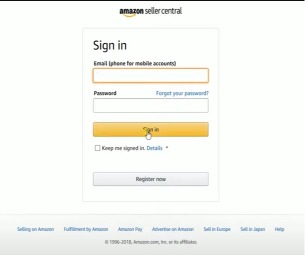
2. Go to: Inventory – Add a Product
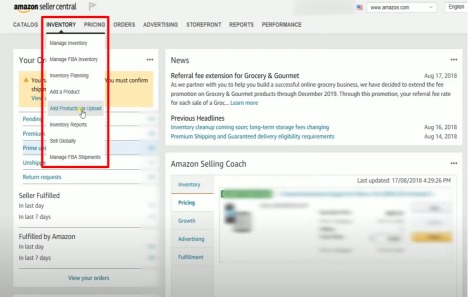
3. Use the Classifier to explore which categories best match your product
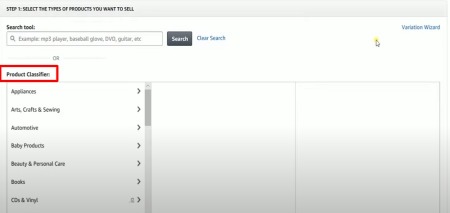
Amazon Business Categories
If you’re only thinking about selling to the average home shopper, you’re missing out on a massive, quietly booming slice of Amazon: Amazon Business. This isn’t just a corporate offshoot it’s Amazon’s B2B engine, serving everyone from startups to Fortune 500 companies. And as a seller, selecting the right Amazon Business product categories can open the opportunities to higher volume orders, bulk discounts, and exclusive visibility perks.
The key difference is products listed under Amazon product categories that align with business or industrial use, think Industrial & Scientific, Office Products, Lab Supplies, or Janitorial Goods are often eligible for business pricing and quantity discounts. That indicates your listings can show two prices either one for regular shoppers, or another lower, incentivized for business buyers.
You don’t need a separate storefront. You just need to ensure your products fall under the right Amazon business product categories and are enrolled in the Amazon Business seller program. Once that’s done, you can set tiered pricing, accept tax-exempt orders, and even earn a “Business Seller” badge that boosts trust.
A quick example: A seller offering ergonomic chairs under “Home Office Furniture” saw a sharp bump in conversions after moving their product into “Office Products > Office Furniture > Chairs.” Why? Because business buyers were filtering by category, and their product finally showed up.
Let’s break down how Amazon Business product categories differ from regular listings, why they matter, and how to use them to your advantage.
What Is Amazon Business?
Amazon Business is Amazon’s B2B platform that caters to companies instead of consumers. Businesses from schools to hospitals use it to place bulk orders with special pricing, tax-exempt features, and purchase workflows tailored to their needs.
As a seller, you don’t need a new Amazon storefront. You just opt into Amazon Business within Seller Central, and your listings become discoverable to institutional buyers.
What Makes a Product Business-Friendly?
You need to position your products better than just reinventing them. Certain Amazon product categories naturally lend themselves to business buyers to think less of trendy phone cases and more of printer paper and industrial gloves.
Popular Amazon Business product categories include:
1. Industrial & Scientific (PPE, lab gear, measuring tools)
2. Office Supplies (paper, binders, desk organizers)
3. Commercial Cleaning (bulk sanitizers, janitorial equipment)
4. Restaurant & Food Service (disposable containers, bulk napkins)
5. Tools & Home Improvement (electric drills, LED fixtures)
How Business Listings Work Differently
Regular Amazon listings target one buyer with one cart. But in Amazon Business, you’re listing for departments, managers, and procurement teams who don’t want to click Add to Cart a hundred times.
Here’s what sets Amazon Business product categories apart: (infographic)
Bulk Pricing: Set price tiers like “Buy 10+, get 10% off”
MOQ (Minimum Order Quantity): Useful for B2B-only SKUs
Business-Only Offers: You can choose to make your listing available only to Amazon Business customers
Enhanced Visibility: Business buyers use different filters and are often shown exclusive listings
Business to Business(B2B)
While consumer categories chase trends, business buyers prioritize reliability, supply, and compliance.
1. Lower return rates
2. Larger average order value
3. Higher repeat purchase potential
4. Less cutthroat competition in categories most new sellers overlook
Amazon Affiliate Product Categories
It is important to know the rule of affiliate marketing: not all clicks are created equal. The same goes for Amazon affiliate product categories, where what you promote matters just as much as how you promote it.
Even if you are a blogger, content creator, or even a brand owner using Amazon’s affiliate links to double-dip on commissions, choosing the right product categories is essential and can be the difference between passive income.
Let’s break it down:
High Ticket = High Commission
You must be thinking that you can just promote a $1,000 laptop and earn the cash. But that isn’t the only way. Amazon’s affiliate commission structure varies wildly by category. And that is surprising right?
Take a look at the Amazon Associates rate chart, and you’ll quickly notice:
1. Luxury Beauty & Amazon Coins often pay 10%
2. Health, Personal Care, Home around 3% to 4.5%
3. Electronics? hardly 1% to 2%
4. Groceries, Pet Supplies, and Physical Books 3%
Recurring Conversions
Want to build real, cumulative affiliate income? Ask yourself what products belong to the repeat purchase category.
Some of the top-selling product categories on Amazon for affiliates include:
1. Skincare & Beauty (especially luxury or clean brands)
2. Household Goods (think: cleaners, storage solutions, air fresheners)
3. Pet Supplies (treats, grooming tools, supplements)
4. Health & Wellness (protein powders, vitamins, yoga gear)
Know that these are the types of purchases people make without thinking much, which means higher conversion rates, more orders per user, and yes, occasional Subscribe & Save bonuses.
Not All Categories Are Affiliate-Friendly
This is where many first-timers slide. Some Amazon product categories are either:
1. Pay little to nothing
2. Don’t pay anything at all if the user doesn’t buy within 24 hours
Also, categories like Industrial & Scientific, Automotive, and some Amazon Business product categories have lower click-to-buy urgency. These aren’t likely to be impulse buys, which means weaker affiliate performance even if the product itself is great.
Product Category Fees
Amazon charges a referral fee every time you make a sale that is non-negotiable. It’s Amazon’s cut for letting you list on their platform. The tricky part is that this fee isn’t universal. It depends entirely on which category your product falls into, and the difference can be shocking.
Take computers, for instance. Products in that category come with a referral fee of just 8%. Sounds fair, right? Now compare that to apparel, which can hit 17% without breaking a sweat. That’s more than double the cut, for the same amount of effort on your end.
The same goes for Beauty. You’ll be charged 8% on items priced under $10, but once you cross that price point, the fee jumps to 15%.
Before listing your products you can go through the official Amazon Referral Fee Table. It’s available on Amazon Seller Central, and it breaks down every category’s referral fee specifically, leaving no room for guesswork. You can look up the exact subcategory your product falls into, not just the broad parent category. That small distinction can make a significant difference.
Also, be cautious when your product straddles two possible categories. A yoga mat, for example, could end up in Sports or Home. One of those may have a lower fee, but dragging your listing into the cheaper category can hurt discoverability or even trigger listing suppressions.
Gated and Ungated Categories
By default all approved sellers can sell on Ungated categories. You can list products without any special documentation or approval process. These include popular categories like Home & Kitchen, Toys, Sports & Outdoors, and Books.
In contrast, Gated categories, require pre-approval. Think of categories like Fine Jewelry, Automotive, Collectibles, Watches, or even subcategories like Topicals in Beauty & Personal Care. Amazon puts restrictions here to minimize counterfeits, ensure safety compliance, or protect brand integrity.
Some of these aren’t just gated by category but by brand, product type, or even condition. So it’s not just about what you’re selling, but how and under whose name.
How to Check Gated Categories on Amazon
Here’s how to find out if the category (or brand) you want to sell in is restricted:
1. Step into Seller Central, and head to Inventory > Add a Product.
2. Search for the product or ASIN you’re planning to sell. If a listing pops up with a big Listing Limitations Apply message, that’s your cue that it’s gated.
3. From there, you’ll usually see a Request Approval button. Clicking it will either instantly approve you (if your account meets internal metrics) or trigger the next step: uploading documents for manual review.
What Documentation Does Amazon Ask For?
This step gets tricky for the sellers. More than just filling a form it is about providing the right kind of documentation, in the right format.
Here’s what Amazon typically looks for when you apply:
1. Invoices from a legitimate distributor or manufacturer (dated within the last 180 days, with full address and contact info)
2. Brand authorization letters if you’re reselling a trademarked product
3. Safety certificates or compliance documents, especially for products in categories like Baby, Topicals, or Health
4. Amazon Brand Registry enrollment, if you’re the brand owner
The more complete and professional your paperwork is, the better. And unfortunately, AliExpress receipts don’t count. Amazon wants real wholesale invoices, not dropshipping screenshots.
What Are the Most Profitable Products to Sell on Amazon?
What makes a product truly profitable on Amazon? It’s not just markup. It’s the spot where high margins, consistent sales volume, low return rates, and reasonable PPC spend intersect. With all four, and you won’t be just you will be scaling.
The interesting part is most profitable products often hide in the nooks and cracks of broader categories. And they are the niche items, not the mainstream bestsellers drowning in competition.
Let’s look at a few real-world examples that tie profitability back to specific Amazon seller product categories:
Health & Personal Care
In private-label supplements or specialized topicals can offer incredible margins, especially when they’re clean-label, well-branded, and come with high perceived value. Yes, the category is gated and compliance-heavy, but once you’re in, you’re tapping into a repeat-purchase goldmine.
Look at olly gummies, Olly’s gummy vitamins generate over $3M/month in sales on Amazon alone. Their multivitamins for stress, sleep, and beauty hit the sweet spot: high repeat purchase rate, strong brand trust, and low PPC ACoS due to high search volume + branded queries.
They also sit under the Health & Personal Care > Vitamins & Dietary Supplements subcategory a goldmine for profitability with relatively low return rates compared to cosmetics.
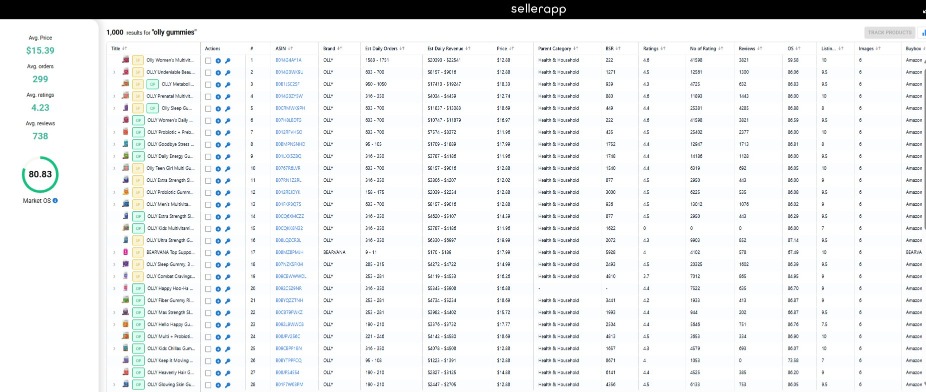
Home & Kitchen
Eco-friendly household products like bamboo scrubbers or reusable food wraps are quietly crushing it. Why? They’re lightweight, have strong branding potential, and appeal to value-driven shoppers who read product pages, meaning lower return rates and higher conversion.
iDesign is a silent giant in the Home & Kitchen > Storage & Organization niche. Their clear bins and modular storage solutions generate consistent five-figure daily revenue.
With an average order value (AOV) of $30-$50 and a low return rate (3%), this brand thrives on the evergreen demand for home organization + influencer-fueled visibility on platforms like TikTok.
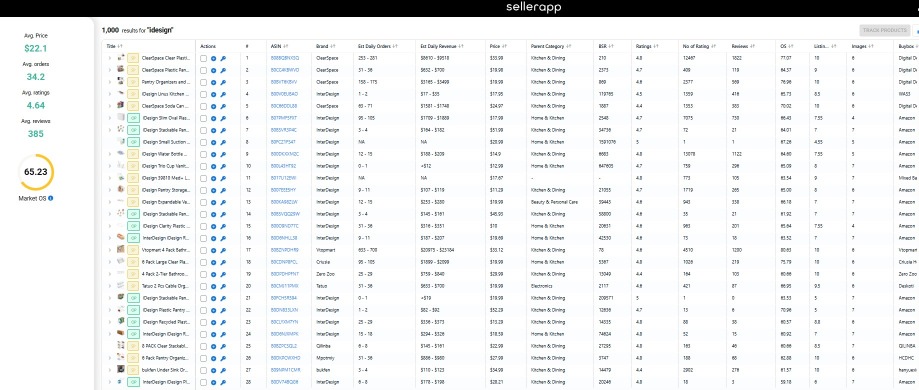
Pet Supplies
Niche grooming tools like deshedding gloves or dental kits consistently deliver profits. Not only are pet parents deeply loyal, but these products usually come with low breakage, low return volume, and the bonus of adorable user-generated content for marketing.
These are more than random products; if planned strategically, they can have significant potential. Make sure to carefully select not just for what sells…but for what sustains.
Under Pet Supplies > Grooming, Furminator owns the deshedding tool market.
Their flagship product averages over 30,000 units/month, and because pet grooming tools have long lifespans and high margins (40-60%), they enjoy low return rates and high profitability.
Pet owners tend to be brand loyal, meaning the LTV (lifetime value) of the customer stays strong.
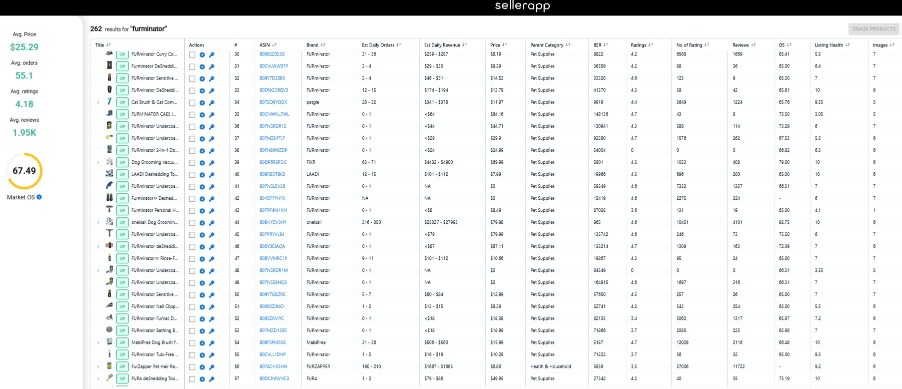
Final Thoughts
If there is one lesson from this entire deep dive into Amazon product categories:
Category selection is based on strategy, facts, and intuition.
Sellers are no longer chasing viral trends; instead, they are reading between the lines, delving into subcategories, evaluating referral fees, and selecting listings based on longevity rather than volume.
That’s exactly where SellerApp’s Category Reports come in. Whether you’re launching a new product or rethinking an underperforming ASIN, these reports give you an exact view and ground-level tracking of category-level trends, and monitoring competitor movements.
Additional Readings:
What is Amazon Fresh? Your 2025 Guide to Quick Grocery Delivery
Best Selling Products on Amazon: Discover the Best in Every Category!
Amazon Brand Analytics: A Deep Dive for Brands


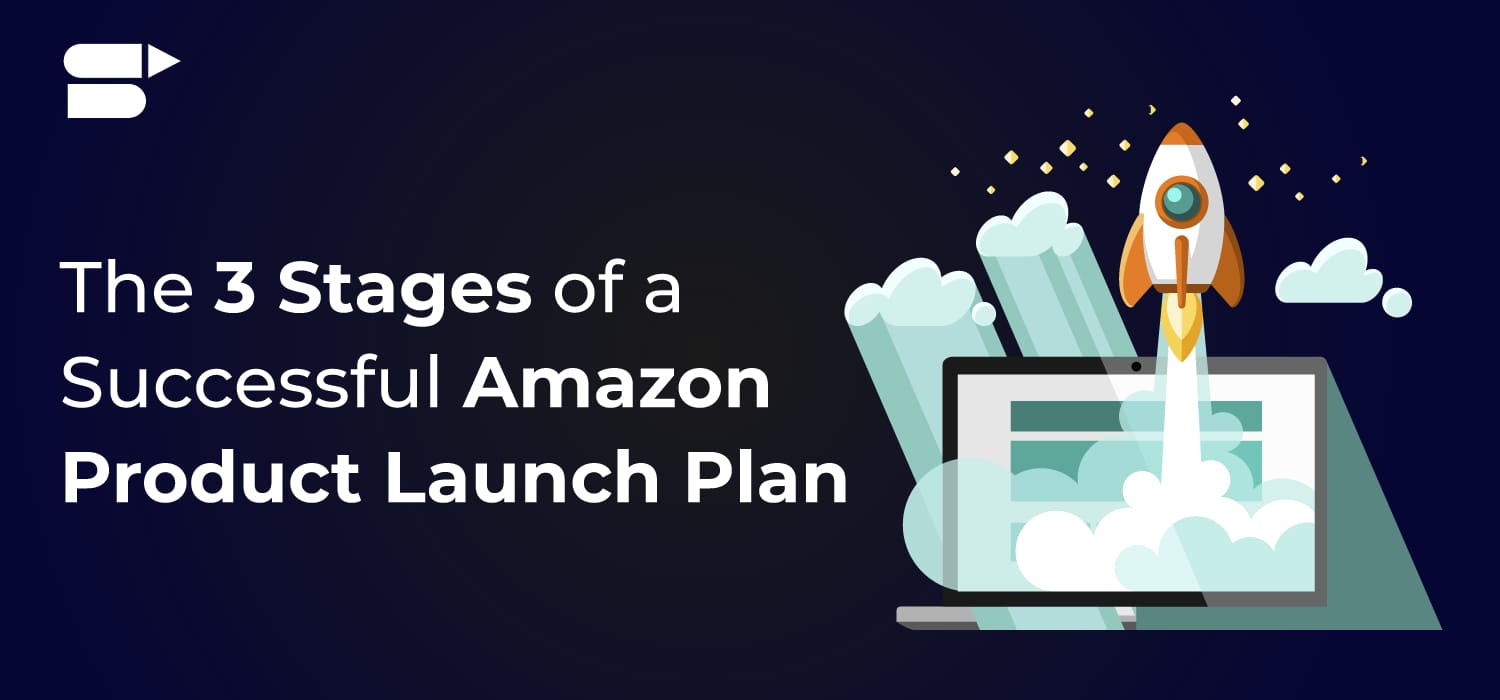
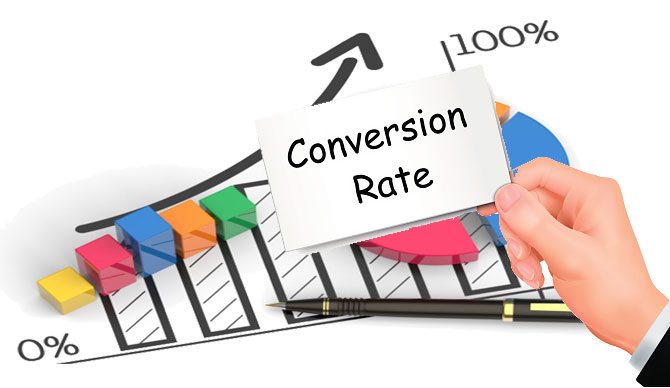


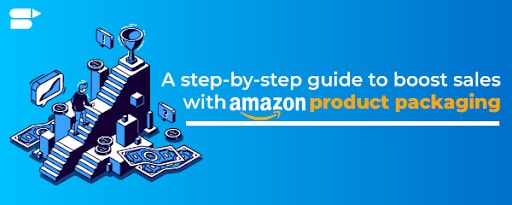




Jennifer Lopez
August 26, 2025This is a well-structured guide that takes away the confusion of navigating Amazon’s huge marketplace.
Joseph Taylor
August 26, 2025The detailed breakdown of category-specific fees makes this article a must-read before listing any new product.
Ashley Rodriguez
August 27, 2025What stands out is how clearly the post connects category selection with long-term profitability and brand success.
David Moore
August 27, 2025The section on gated versus ungated categories is especially useful for avoiding common mistakes that can slow down growth.
Jane Bisping
August 27, 2025A very practical resource for new sellers who often struggle with choosing the right category to start their Amazon journey.
Gregory Ler
August 28, 2025I really like how the guide explains not just what to sell but also the fees and restrictions that come with each category.
Elizabeth Garcia
August 28, 2025This article does a great job of breaking down Amazon’s product categories and helping sellers identify the most profitable ones.